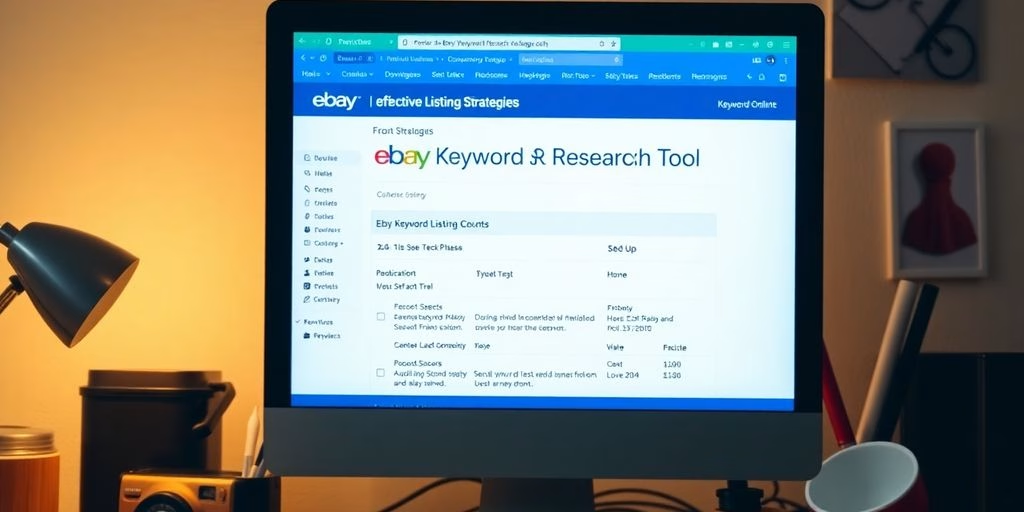In a world where businesses vie for consumer attention, cultivating a unique brand identity is not just a luxury, but a necessity for standing out in a crowded marketplace. A distinctive brand identity is the amalgamation of various elements such as your brand’s core values, visual aesthetics, messaging, and customer experience. It’s a strategic blueprint that can guide your business to success by making it memorable and relatable to your target audience. In this article, we delve into key strategies that can help businesses, including those in the jewelry sector, to carve out a niche for themselves and build a brand that truly resonates with customers.
Key Takeaways
- Unearth your brand identity by identifying unique positioning, defining mission and vision, and crafting a compelling value proposition.
- Create a visual identity that speaks volumes through market research, competitor audits, and selecting resonant design elements.
- Compose impactful messaging by establishing a consistent tone of voice and ensuring clarity and memorability across all platforms.
- Align customer experience with your brand promise, incorporate feedback loops, and keep the brand experience fresh and engaging.
- Continuously adapt and evolve your brand strategy to stay relevant and maintain a strong connection with your target audience.
Unearthing Your Brand Identity

Identifying Your Unique Positioning
In the grand bazaar of businesses, standing out is about as easy as finding a whisper in a thunderstorm. But fear not, for the quest to establish your brand identity and unique positioning is a thrilling adventure that begins with a deep dive into the soul of your brand. It’s about reflecting values that resonate and choosing a name that sticks like gum on a hot sidewalk.
- First, determine your current brand positioning. Understand where you stand in the eyes of your audience.
- Next, articulate how you stand out from the competition. Maybe you’re the most interactive e-learning platform or the boutique with the quirkiest fashion finds.
- Finally, weave this positioning into your brand’s narrative, making it as integral as the plot twist in a bestseller.
The crux of the matter is to ensure that your unique positioning is not just a catchy tagline but a genuine embodiment of what your brand stands for. It’s a meticulous process, akin to crafting a fine wine that gets better with time.
Remember, a strong brand identity doesn’t just happen overnight. It’s the result of strategic thinking, creative flair, and a dash of patience. Implementing effective SEO strategies can also drive traffic and boost sales, turning casual browsers into loyal customers.
Defining Your Brand’s Mission and Vision
Embarking on the journey to define your brand’s mission and vision is akin to setting the GPS for your company’s future. It’s not just about where you’re going, but who you’ll be upon arrival. Your mission statement is your brand’s battle cry, a declaration of purpose that rallies the troops and provides a clear direction. It should set a vision for the future and reflect the aspirations of what your brand seeks to achieve.
Crafting a mission and vision that resonate with your brand’s soul isn’t just about lofty words; it’s about creating a specific, measurable, and achievable plan that your brand will consistently follow. This is the compass that guides your brand through the tempest of the market.
Remember, your mission and vision are not just sentences to be slapped on a website or a brochure. They are the essence of your brand’s identity, the DNA that will replicate through every aspect of your business. Here’s a simple guide to ensure you’re on the right track:
- Reflect on your brand’s unique strengths and how they benefit your audience.
- Imagine the future landscape of your industry and where your brand fits within it.
- Distill these thoughts into concise statements that are both inspiring and pragmatic.
Crafting Your Brand’s Value Proposition
In the grand bazaar of commerce, your brand’s value proposition is your secret spice mix that makes customers choose your dish over countless others. It’s the heart of your brand identity, pumping life into every marketing artery. Develop a strong brand identity by reflecting values, choosing a memorable name, and implementing effective SEO strategies to drive traffic and boost sales. But remember, a value proposition is more than a catchy slogan; it’s a promise to your customers that you must deliver on consistently.
To craft a compelling brand identity, focus on a distinct value proposition. Ensure your communication is crystal clear for users to grasp who you are and what your brand represents.
Here’s a simple recipe to concoct your brand’s value potion:
- Identify the unique flavors of your brand that tantalize the customer’s palate.
- Stir in a generous helping of your brand’s mission and vision to add depth.
- Sprinkle your brand’s personality traits to season the mix to perfection.
- Finally, garnish with a dash of creativity to ensure your brand stands out in a crowded market.
Remember, your value proposition should resonate with your target audience and differentiate you from the competition. It’s not just what you sell; it’s the story that tells why you exist and how you make life better for your customers.
Designing a Visual Brand Identity That Speaks Volumes

Conducting Market Research for Visual Trends
Embarking on the voyage of market research is akin to being a visual trend archaeologist, digging through layers of consumer behavior and competitor strategies to unearth the gems that will define your brand’s aesthetic future. Boldly navigating through the sea of data, you’ll find the currents of visual trends that resonate with your target audience, ensuring your brand’s message is not just seen, but felt.
- Understand the motivation behind consumer purchases to tailor your visual identity.
- Monitor the evolution of your market to stay ahead of visual trends.
- Analyze the competitive landscape to carve out a unique visual niche for your brand.
In the quest for visual distinction, it’s not just about what’s trending now, but forecasting what will capture the imagination tomorrow. Balancing the scales between what’s en vogue and what’s uniquely you is the key to a visual identity that stands the test of time.
Auditing Competitor Visuals for Differentiation
In the grand chessboard of market dominance, auditing your competitors’ visuals is a savvy move. It’s not just about who has the snazziest logo; it’s a strategic deep dive into the visual psyche of your industry. Here’s how to do it with style and substance:
- Begin with a strategic analysis of logos and branding materials. Remember, strategic logos elevate brand identity.
- Consider the color schemes. Color psychology enhances design impact, weaving a subtle thread of emotion into the brand narrative.
- Tailor your design approach to your industry for that extra edge in image and competitiveness.
By dissecting the visual elements of your rivals, you unearth opportunities to stand out. It’s not about reinventing the wheel; it’s about adding your unique spin to it.
Strategies for logo design should not only stand out with bold visuals but also encapsulate your story and emphasize your USP while maintaining consistency. After all, a well-crafted visual identity is more than just eye candy; it’s a silent ambassador for your brand identity.
Selecting Design Elements That Resonate with Your Brand Identity
Once the soul of your brand is laid bare, the next step is to clothe it in visuals that are not just pretty, but profoundly pertinent. Think of it as a sartorial elegance for your brand, where every design element from the strategic logo design to the typography must sing in harmony with your brand’s core values.
- Logo: The face of your brand, a visual handshake that says, ‘Hello, this is who we are.’
- Color Palette: More than just aesthetics, it’s a psychological play that sets the mood and evokes emotions.
- Typography: The silent ambassador of your brand, speaking volumes without uttering a word.
- Imagery: The storyteller, weaving narratives that resonate with your audience’s aspirations.
Remember, in the grand theatre of markets, your brand’s visuals are the set design that can make or break the audience’s experience.
By adhering to effective design principles, you ensure that every visual cue is a step towards enhancing brand visibility and driving sales. After all, a brand that looks good on the surface but fails to connect at a deeper level is like a book with a beautiful cover but no story within. To avoid such a faux pas, include clear, easy-to-follow guidelines for every part of the brand identity, ensuring that your brand’s visual symphony is not just seen, but felt.
Composing Your Brand’s Messaging

Establishing a Tone of Voice That Echoes Your Brand Personality
In the grand orchestra of branding, your tone of voice is the soloist that can either captivate the audience or be drowned out by the cacophony of competitors. It’s not just what you say, but how you say it that enchants your customers and imprints your brand in their memory. A distinct tone of voice reflects the personality of your brand and builds a consistent character across all forms of communication.
Your brand voice is the verbal embodiment of your brand’s identity, and it should resonate with your core values and the expectations of your audience.
To strike the right chord, consider these steps:
- Identify the core values that your brand stands for.
- Understand the nuances of your target audience’s language.
- Analyze your current communication for tone consistency.
- Craft a voice that is authentic and aligns with your brand’s character.
Remember, a well-defined brand voice not only sets you apart from the competition, but it also fosters trust and loyalty among your customers. By ensuring that your tone of voice is consistent and reflective of your brand’s identity, you create a memorable brand experience that resonates with your audience.
Creating Messaging That Sticks in the Minds of Your Audience
In the digital bazaar, where every brand clamors for attention, creating messaging that resonates and sticks is akin to finding a golden needle in a haystack. It’s not just about being heard; it’s about being remembered. To achieve this, one must blend the art of storytelling with the science of strategic communication.
- Storytelling: Weave narratives that capture the essence of your brand and echo in the hearts of your audience.
- Clarity: Ensure every message is crystal clear, leaving no room for ambiguity or confusion.
- Consistency: Hammer home your core messages across all platforms to build familiarity and trust.
- Engagement: Interact with your audience, making them feel seen and valued.
By embedding your brand’s values and personality into every message, you create a tapestry of experiences that stick with your audience long after the screen fades to black.
Remember, it’s not just about what you say, but how you say it. The tone, the timing, and the platform all play pivotal roles in ensuring your message doesn’t just float away in the digital ether but lands with impact and intent.
Ensuring Clarity and Consistency Across All Platforms
Consistency is key to your brand identity. It’s the thread that weaves through the fabric of your brand’s presence, from the bold colors on your website to the punchy taglines in your ads. To achieve this harmonious blend, consider the following:
- Visual Consistency: Align your visual elements—logos, colors, fonts—so they sing the same tune on every stage.
- Messaging Consistency: Your brand’s story should echo unwaveringly, whether it’s told in a tweet or a company brochure.
- Brand Behavior: Ensure your brand’s actions and interactions are in sync with its promises, fostering trust and reliability.
By meticulously curating each touchpoint, you create a symphony of experiences that resonate with your audience, turning casual onlookers into loyal fans.
Remember, a brand that embraces imperfections and builds trust through personalized interactions is a brand that stays etched in the minds of its customers. Tailor your content to platforms, ensuring that each piece not only fits but flourishes, creating shareable content that’s rich with authenticity, value, and emotion. After all, a brand’s consistency is not just about repetition; it’s about creating a reliable and recognizable presence that your audience can count on, no matter where they encounter you.
Aligning Perception with Promise

Designing a Customer Journey That Reflects Your Brand Promise
Embarking on the design of a customer journey is akin to crafting a story where your brand is both the narrator and the backdrop. Every touchpoint is a chapter, and it’s your job to make it a page-turner. To ensure your brand’s core promise is not just a statement but a lived experience, consider these steps:
- Begin with a thorough understanding of your customer’s needs and expectations.
- Map out each stage of the journey, from initial awareness to post-purchase advocacy.
- Infuse experiential merchandising to create lasting memories beyond transactions.
- Regularly review and refine the journey, ensuring it remains aligned with your brand’s evolving narrative.
The ultimate goal is to transform mere interactions into a symphony of experiences that resonate deeply with your audience.
Remember, a customer journey map is not just a tool; it’s a treasure map that reveals the heart of your brand. By aligning the journey with your brand promise, you not only foster customer fidelity but also turn customers into passionate brand ambassadors. After all, a brand that delivers on its promises is a brand that stands tall in the marketplace, turning heads and winning hearts.
Incorporating Feedback Loops to Enhance Service Offerings
The alchemy of customer satisfaction begins with a potent spell: the feedback loop. Acting on the feedback you receive is like turning base metals into gold for your brand’s reputation. It’s not just about collecting comments; it’s about transforming them into actionable insights that refine your offerings. Here’s a simple recipe for a successful feedback loop:
- Listen: Tune into the customer’s voice across all channels.
- Acknowledge: Let them know their feedback is a treasure, not an echo in the void.
- Analyze: Distill the essence of their words to understand their needs.
- Act: Implement changes that address their concerns and enhance their experience.
- Follow-up: Circle back to ensure the changes made hit the mark.
Remember, feedback is a goldmine, whether it’s praise or criticism. It’s an opportunity to enhance your brand strategy and ensure your customer’s journey is nothing short of magical.
By weaving feedback into the very fabric of your service offerings, you create a tapestry of trust and loyalty. Customers feel heard and valued, and they’re more likely to stick around for the next chapter of your brand’s story. After all, the secret to creating a positive customer experience is to listen to your customer’s feedback and leverage it to improve your products and services.
Keeping the Brand Experience Fresh and Memorable
In the ever-evolving marketplace, the freshness of your brand experience is the zest that keeps the consumer palate intrigued. Experiential merchandising creates lasting memories through immersive experiences, building connections and brand loyalty that extend beyond transactions. It’s not just about what you sell, but how you make your customers feel.
- Encourage and nurture customers who are passionate about your brand. They can be invaluable in spreading positive word-of-mouth and offer genuine insights into your brand’s resonance.
- Regularly refresh your brand touchpoints to maintain excitement and relevance. This could mean updating your website, reimagining your store layout, or introducing new product packaging.
- Stay ahead of the curve by innovating and experimenting with new ways to engage your audience. Whether it’s through technology, storytelling, or unique collaborations, keep them guessing—and coming back for more.
Consistency is the secret sauce to a memorable brand experience. While it’s important to introduce new flavors, ensure that the core ingredients that define your brand remain unchanged. This balance is what fosters a lasting relationship with your audience.
Navigating the customer experience landscape can be a complex task, but aligning your brand’s perception with the promises you make is crucial for success. At Cerberus Works, we understand this conundrum and are dedicated to helping you bridge the gap.Contact us to learn how our expertise in Branding & Design, Technology & Development, and Digital Marketing can transform your business. Don’t let the conundrum hold you back – contact us now and let’s achieve remarkable success together!
Conclusion
As we’ve journeyed through the labyrinth of brand identity, we’ve unearthed the treasures of differentiation, the charms of clarity, and the spells of consistency. Remember, your brand is much like a rare gem in a sea of stones—it’s your unique sparkle that catches the eye.
Whether it’s the allure of your values, the magnetism of your messaging, or the enchantment of your visual voodoo, each facet contributes to the kaleidoscope that is your brand’s soul. So, keep polishing those brand elements until they shine like diamonds, and watch as your business becomes the jewel in the crown of your industry. Now go forth and brandish your brand with the confidence of a pirate sailing the seven seas of success!
FAQs
How do I uncover my brand identity?
To uncover your brand’s unique identity, reflect on what sets your business apart, such as exceptional customer service, innovative products, or a commitment to sustainability. Identify your brand’s values, mission, target audience, visual design, tone of voice, and overall personality to establish a distinct presence in the market.
What are the key elements of a strong brand identity?
Key elements of a strong brand identity include a clear value proposition, consistent visual design, a resonant tone of voice, and messaging that clearly communicates who you are and what your brand represents. These elements should work together to differentiate your brand from competitors and resonate with your target audience.
Why is having a unique brand identity important for my business?
A unique brand identity is crucial for differentiating your business from competitors, especially in saturated markets. It makes your brand memorable and helps customers choose your brand over others. A strong identity also encourages organic promotion through customer referrals.
How can I ensure my brand’s messaging is effective?
To ensure your brand’s messaging is effective, focus on clarity and precision in communication. Your messaging should be easy to understand and convey your value proposition compellingly. Consistency across all platforms also reinforces your brand’s message and identity.
What strategies can I use to create a visual identity that stands out?
To create a visual identity that stands out, conduct market research on visual trends, audit competitor visuals for differentiation, and select design elements that align with your brand essence. Your visual identity should be distinctive and reflect your brand’s core values and personality.
How can I align my customer experience with my brand promise?
To align your customer experience with your brand promise, design a customer journey that reflects your brand values and mission. Incorporate feedback loops to continually enhance your service offerings and ensure the brand experience remains fresh and memorable for customers.

![A Comprehensive Guide to Google Play Console Pricing [n8n]](https://cworks.id/wp-content/uploads/2025/09/cover-image-24622.avif)
![Understanding the Google Play Console Price: What Developers Need to Know [arvow]](https://cworks.id/wp-content/uploads/2025/05/4755037cthumbnail.avif)






































































































